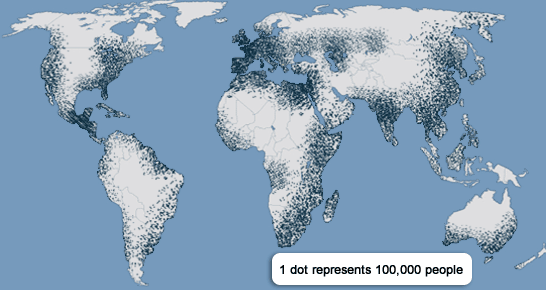What is population distribution?
Population distribution means the pattern of where people live. World population distribution is uneven. Places which are sparsely populated contain few people. Places which are densely populated contain many people. Sparsely populated places tend to be difficult places to live. These are usually places with hostile environments e.g. Antarctica. The environment in Antarctica makes it a very challenging location to live, with cold temperatures, lack of vegetation and geographical isolation few people live here.
Places which are densely populated are habitable environments e.g. Western Europe and the East Coast of the USA. This can be the result of flat relief, a favourable climate, availability of natural resources and fresh water.

Manhattan, New York is densely populated.
Population distribution is also uneven within a country. Locations with favourable conditions are generally more densely populated compared to those in more challenging environments. For example, North Wales has a lower population density than South Wales. In the north the relief is mountainous around Snowdonia, however, in the south, the relief is flat and can be easily built on.
Population distribution is often shown on a map. It can be shown on a dot map, as below, or choropleth map.

A population dot map
However, there has been a recent trend in presenting population distribution data in fourths.
Further reading: What is population density?
Use the images below to explore related GeoTopics.